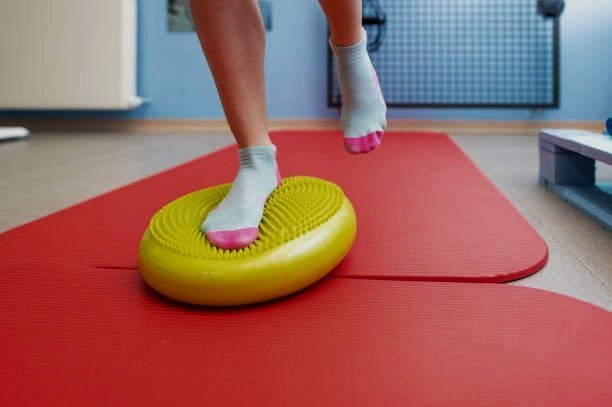
IMS Therapy in Fernie BC
At Ridgeline Physio, we are now pleased to add IMS (Intramuscular Stimulation) to our list of services!
What is Intramuscular Stimulation?
Intramuscular Stimulation (IMS) is a total system for the diagnosis and treatment of persistent myofascial pain syndromes, including muscle, joint, tendon, bursal, fascial, neural and biomechanical problems. IMS treatments are used for chronic neuropathic pains that often occur when nerves malfunction following a trauma that you have experienced. This trauma will cause your nerves to become extremely sensitive potentially leading to muscle tightness and other issues. IMS treatment aims to relieve and release these muscles, which have been pressing on your irritated nerves.
When you experience muscle tightness or pain, it is often caused by underlying issues in the nerves or muscles themselves. IMS works by targeting these areas directly, stimulating the muscle and helping to release tension. The needles used in IMS are extremely fine, and the treatment is often well tolerated.
Who Can Benefit from IMS?
IMS can be effective for a variety of conditions, including:
Chronic muscle pain (e.g., lower back pain, neck pain)
Tension headaches
Sciatica and radiculopathy
Degenerative Disc Disease
Shin splints
Frozen shoulder
Muscle spasms
Repetitive strain injuries (e.g., tennis elbow, Achilles tendinopathy, plantar fasciopathy)
Myofascial pain syndrome
Rotator cuff injuries
If you’ve been dealing with long-standing pain or tightness that hasn’t responded well to other treatments, IMS could be the solution you need to accelerate your recovery.
Frequently Asked Questions
-
IMS is similar to acupuncture in that it uses needles, but they are used for different purposes. Acupuncture is based on Traditional Chinese Medicine (TCM) and focuses on restoring balance to the body's energy (Qi). IMS is rooted in Western medicine and aims to treat musculoskeletal pain and dysfunction by targeting specific trigger points and muscle groups.
-
During an IMS session, you may feel a slight pinch or a dull ache as the needle is inserted. Some people experience a sensation of "tightness" or "twitching" in the muscle, which indicates the muscle is being stimulated. While the treatment is generally well-tolerated, it can cause some temporary soreness after the session, similar to the sensation of post-workout muscle soreness.
-
The number of IMS sessions required varies depending on the individual and the severity of the condition. Some people experience relief after just a few sessions, while others may require ongoing treatment. Typically, 3 to 6 treatments are recommended in the initial phase, with follow-up sessions based on progress.
-
IMS is generally considered safe when performed by a trained healthcare professional. However, as with any medical treatment, there are risks. These can include minor bruising, soreness, or infection (though rare). It is important to discuss any medical conditions or concerns with your practitioner before undergoing IMS treatment.
-
The effects of IMS can last for varying lengths of time depending on the individual and the nature of the condition being treated. Some people experience immediate relief after a session, while others may feel a gradual improvement over a few days. Regular treatments can help maintain and prolong the benefits.
-
IMS is generally not considered highly painful, though some discomfort is common, especially when needles are inserted into tight or sensitive muscle areas. The muscle twitching that occurs when the needle stimulates the trigger point is often described as an unusual, but not unbearable, sensation. Most people tolerate the procedure well.
-
Potential side effects include temporary soreness or bruising at the needle insertion sites, fatigue, or mild dizziness. These typically resolve within a day or two. Serious side effects are rare when the procedure is performed by a trained practitioner.
-
It’s generally recommended to avoid intense or maximum level exercise immediately after IMS, as the muscles may be sore or sensitive and your body's proprioception has changed. However, gentle stretching or light activity may be beneficial.
What to Expect in Your Session
Something to keep in mind for any IMS session is that muscle penetration with needles is often painless, but a cramping sensation can at times be felt due to the penetration of the shortened and supersensitive muscle. To help you best prepare for the actual dry needling session, here is what you can expect post-treatment:
An achy, fatigued sensation in those muscles that were needled
An instant increase in Range of Motion and strength in the affected area
An instant reduction in Neuropathic signs (reduced tenderness, reduced cool skin sensation, reduced goosebumps)
Application of heat can be helpful immediately following the treatment and intermittently (as necessary) in the 24-36 hours post-treatment. This helps lessen muscle achiness and fatigue







